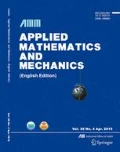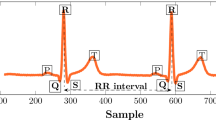Abstract
One of the important issues in the system identification and the spectrum analysis is the frequency resolution, i.e., the capability of distinguishing between two or more closely spaced frequency components. In the modal identification by the empirical mode decomposition (EMD) method, because of the separating capability of the method, it is still a challenge to consistently and reliably identify the parameters of structures of which modes are not well separated. A new method is introduced to generate the intrinsic mode functions (IMFs) through the filtering algorithm based on the wavelet packet decomposition (GIFWPD). In this paper, it is demonstrated that the GIFWPD method alone has a good capability of separating close modes, even under the severe condition beyond the critical frequency ratio limit which makes it impossible to separate two closely spaced harmonics by the EMD method. However, the GIFWPD-only based method is impelled to use a very fine sampling frequency with consequent prohibitive computational costs. Therefore, in order to decrease the computational load by reducing the amount of samples and improve the effectiveness of separation by increasing the frequency ratio, the present paper uses a combination of the complex envelope displacement analysis (CEDA) and the GIFWPD method. For the validation, two examples from the previous works are taken to show the results obtained by the GIFWPD-only based method and by combining the CEDA with the GIFWPD method.
Similar content being viewed by others
References
Chen, G. and Wang, Z. C. A signal decomposition theorem with Hilbert transform and its application to narrowband time series with closely spaced frequency components. Mechanical Systems and Signal Processing, 28, 258–279 (2012)
Feldman, M. Time-varying vibration decomposition and analysis based on the Hilbert transform. Journal of Sound and Vibration, 295, 518–530 (2006)
Huang, N. E., Shen, Z., Long, S. R., Wu, M. C., Shih, H. H., Zheng, Q. N., Yen, N. C., Tung, C. C., and Liu, H. H. The empirical mode decomposition and the Hilbert spectrum for non-linear and non-stationary time series analysis. Proceedings of the Royal Society London A, 454, 903–995 (1998)
Rilling, G. and Flandrin, P. One or two frequencies? The empirical mode decomposition answers. IEEE Transactions on Signal Processing, 56(1), 85–95 (2008)
Yang, J. N., Lei, Y., Pan, S. W., and Huang, N. System identification of linear structures based on Hilbert-Huang spectral analysis, part 1: normal modes. Earthquake Engineering and Structural Dynamics, 32, 1443–1467 (2003)
Zheng, M., Shen, F., Dou, Y. P., and Yan, X. Y. Modal identification based on Hilbert-Huang transform of structural response with SVD preprocessing. Acta Mechanica Sinica, 25, 883–888 (2009)
Wang, W. Decomposition of wave groups with EMD method. The Hilbert-Huang Transform in Engineering (eds. Huang, N. and Attoh-Okine, N.), CRC Press, Boca Raton, 267–280 (2005)
Huang, T. L., Qiu, F. Q., and Lou, M. L. Application of an improved HHT method for modal parameters identification of structures with closely spaced modes (in Chinese). Journal of Central South University (Science and Technology), 42(7), 2054–2062 (2011)
Carcaterra, A. and Sestieri, A. Complex envelope displacement analysis: a quasi-static approach to vibrations. Journal of Sound and Vibration, 201, 205–233 (1997)
Feldman, M. Analytical basics of the EMD: two harmonics decomposition. Mechanical Systems and Signal Processing, 23, 2059–2071 (2009)
Author information
Authors and Affiliations
Corresponding author
Additional information
Project supported by the State Key Program of National Natural Science of China (No. 11232009) and the Shanghai Leading Academic Discipline Project (No. S30106)
Rights and permissions
About this article
Cite this article
Kim, Y.S., Chen, Lq. Separation of closely spaced modes by combining complex envelope displacement analysis with method of generating intrinsic mode functions through filtering algorithm based on wavelet packet decomposition. Appl. Math. Mech.-Engl. Ed. 34, 801–810 (2013). https://doi.org/10.1007/s10483-013-1708-9
Received:
Revised:
Published:
Issue Date:
DOI: https://doi.org/10.1007/s10483-013-1708-9
Key words
- empirical mode decomposition (EMD)
- wavelet packet decomposition
- complex envelope displacement analysis (CEDA)
- closely spaced modes
- modal identification




